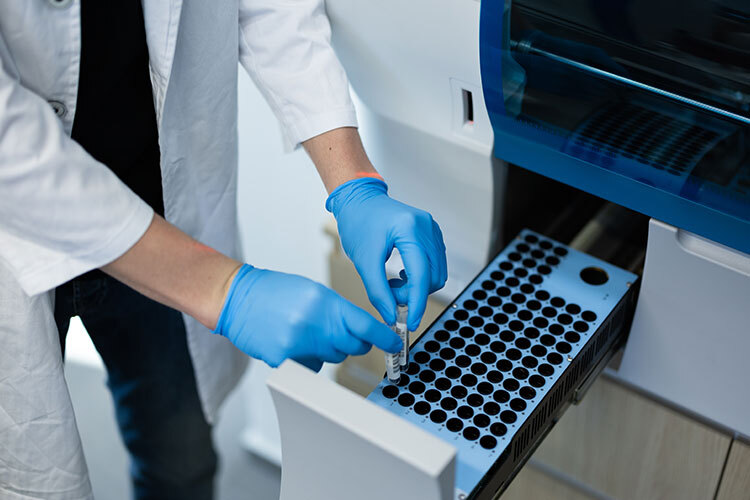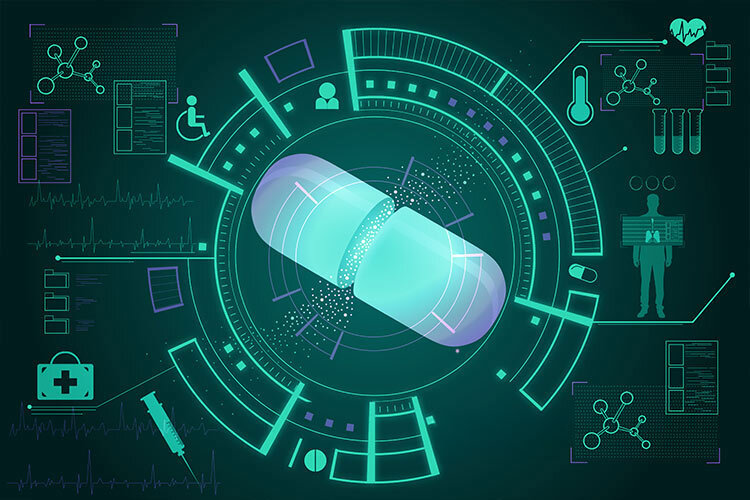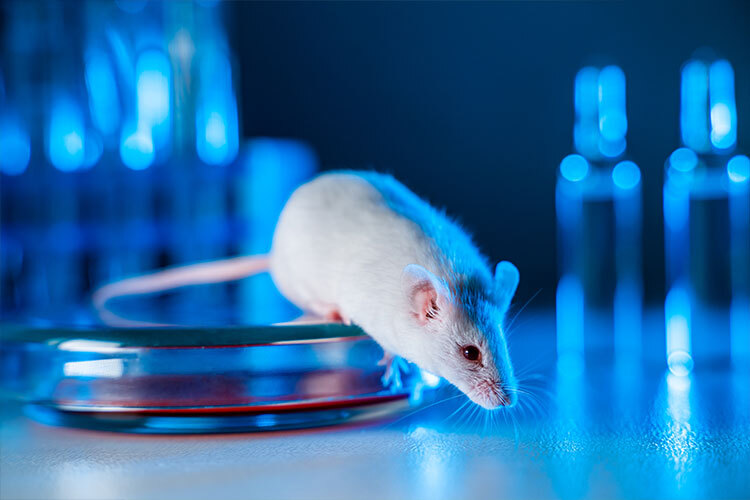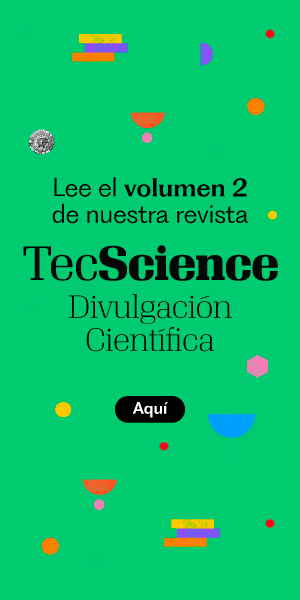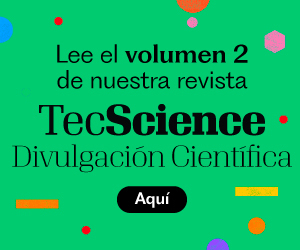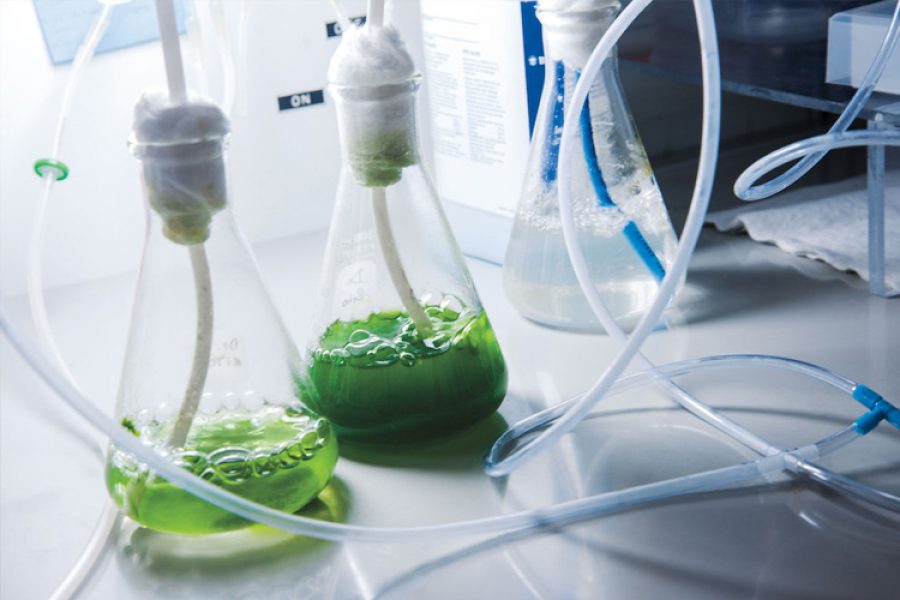Chronic inflammation is a process that often occurs in the human body as people age. As it progresses, it’s linked to a higher risk of cardiovascular disease, diabetes, and other chronic conditions. Its development can be tracked using a biosensor that detects certain body fluids, which could also reveal a person’s biological age—that is, how worn out their body really is—and help assess whether they are aging in a healthy way.
Researchers from the National Autonomous University of Mexico (UNAM) and Tecnológico de Monterrey are collaborating on a project to develop a device that combines synthetic biology and microfluidic technology to detect molecules associated with chronic inflammation. The goal is to help people determine whether this condition is developing in their bodies.
The initiative, titled Devices Based on Molecular Switches for Diagnosing Healthy Aging, is backed by the UNAM-TEC Consortium. Leading the project are Tatiana Fiordelisio, head of the National Laboratory of Biomimetic Solutions for Diagnosis and Therapy (LaNSBioDyT) at UNAM’s Faculty of Sciences, and José Mario González, research professor in the Department of Bioengineering at the School of Engineering and Sciences (EIC) at Tec’s Mexico City campus.
The device could offer people an affordable way to perform these tests without having to go to a lab, significantly cutting down on costs and eliminating the need for cold-chain logistics to handle samples. It would also serve as an early detection tool for inflammatory signals, helping prevent frailty, multiple chronic conditions, and other age-related diseases.
How Do Molecular Switches Work?
González explains that molecular switches act like biological on-off buttons that trigger or deactivate functions when they recognize a target molecule—for instance, lighting up a fluorescent signal upon detection. In the future, they could also be programmed to carry out corrective actions inside the body, such as producing antibodies or releasing therapeutic molecules, depending on what they detect. The goal is to make them modular, so they can link together and interact with other components, much like elements in a logic circuit.
With just a single drop of blood, this biosensor delivers easy-to-read colorimetric results, enabling a practical and targeted evaluation of inflammation levels right at home.
“Molecules can behave like electronic devices—that’s the core idea behind synthetic biology. The goal is to give molecules new capabilities, so they not only detect health issues, but can also trigger a controlled response,” says González.
Synthetic Biology to Detect Chronic Inflammation
In this project, the researchers selected C-reactive protein (CRP) as their biomarker. This protein is produced by the liver in response to infection or injury and can be detected in the blood—even at low levels—when inflammation is present, even if there are no obvious symptoms. As people age, CRP levels may rise, leading to a phenomenon known as inflammaging—a blend of the words inflammation and aging—which is associated with a range of health issues.
Typically, diagnostic and detection models use antibodies to recognize proteins like CRP linked to inflammation. However, antibodies are highly specific molecules that are expensive and resource-intensive to produce. They can only be developed in living animals and require lengthy validation processes.
As an alternative, the researchers opted to use aptamers—synthetic molecules made from nucleic acids (DNA or RNA strands) that are designed and produced in the lab. Like antibodies, they act as “molecular hooks” that recognize and bind to inflammatory proteins. But aptamers are cheaper and faster to manufacture, more stable and easier to store, and they don’t require the use of animals.
“One of the biggest challenges is being able to detect molecules that can tell us whether we’re healthy or if something in our body is beginning to change. With this device, we’re combining two technologies—molecular switches and aptamers—to make it easier and more precise to detect those molecules that are currently hard to identify,” says Fiordelisio.
González points out that this molecular system stemmed from a project developed by students in Tec’s Biotechnology program who took part in the international iGEM synthetic biology competition. He adds that the students also proposed the theoretical framework for applying this technology to detect healthy aging indicators, since it could be useful for identifying molecules linked to other diseases as well.
Designing a Preventive Device Using Molecular Technology
The project is currently in the prototyping phase, which marks its early development stage. The researchers have already succeeded in detecting the protein and triggering a signal from the switch. They’re now working on building the first functional instrument that integrates this molecular technology.
Fiordelisio explains that they’re developing a portable device—roughly the size of 10 by 15 centimeters—similar to a chip or cassette. Inside, it houses a microfluidic system that allows them to manipulate liquids through tiny channels, such as samples of blood or saliva. These channels include reaction zones where aptamers are placed to detect the biomarker. If the biomarker is present, the molecular switches are activated and generate a visible signal.
Once the prototype is complete and tested with human samples, the next step would be to validate its safety and effectiveness. Eventually, they aim to transfer the technology to a business partner who can help bring the device to market.
The long-term goal, says Fiordelisio, is to create an accessible, fast, and low-cost Point-of-Care option for the public—essentially, a preventive health test for monitoring purposes. “Our vision is for it to work like a pregnancy test. You could go to the pharmacy, place a drop of blood, and know in 15 minutes whether you should see a doctor.”
González, who is part of the Aging research group at EIC, notes that this project addresses a gap in tools that help people track the progression of their biological aging and support informed decisions about their health. Still, while the device will help detect molecules linked to inflammation and aging, he emphasizes that a formal diagnosis should always come from a healthcare professional.
“We’d love to see this technology go beyond the lab and reach clinics and everyday people—and that it’s produced here in Mexico,” he adds. “Our aim is to empower people to monitor their aging and make choices that help them live longer and better lives.”
Did you find this story interesting? Would you like to publish it? Contact our content editor to learn more at marianaleonm@tec.mx
